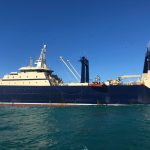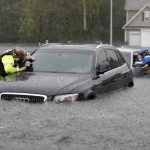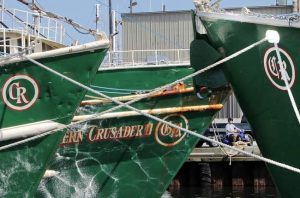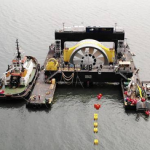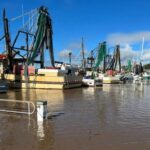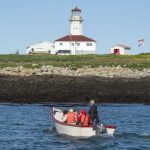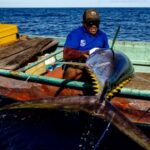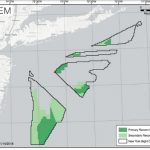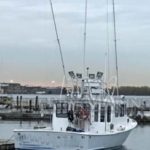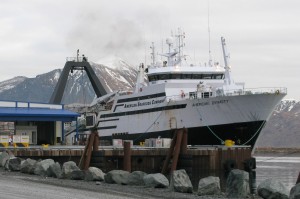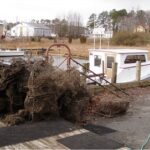Search Results for: plankton

Is seismic testing to blame for disappearing plankton? This scientist says it’s possible
Scientists have noticed a mysterious population crash in some of the Atlantic Ocean’s tiniest and most important species, and a Halifax biologist says oil and gas exploration may be to blame.,,, The tiny organisms are disappearing from Newfoundland and Labrador’s waters, and Lindy Weilgart says blasts from seismic air guns have been shown to wipe them out.,,, On the other side of the world, Australian scientists first found that testing with seismic air guns destroys plankton a few years ago, >click to read< 21:18
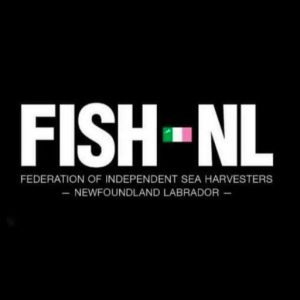
FISH-NL renews call for halt to seismic testing – ‘If plankton isn’t protected you might as well say goodbye to the fish’
The Federation of Independent Sea Harvesters of Newfoundland and Labrador (FISH-NL) is once again calling on the Canada/Newfoundland and Labrador Offshore Petroleum Board (C-NLOPB) to suspend offshore seismic work in light of new research that reveals plankton productivity has plunged. The research by the federal Department of Fisheries and Oceans (DFO) doesn’t link the dramatic and persistent drop in plankton to seismic activity, but other research has found the intense acoustic signals may damage the critical elements of the food chain. “It’s highly coincidental that as seismic activity ramped up plankton productivity plunged,” says Ryan Cleary, President of FISH-NL. “Seismic activity may be necessary for offshore oil and gas development, but it must not come at the expense of our wild fisheries and marine ecosystem — cutting off our nose to spite our face.” >click to read<10:43

FISH-NL renews call for halt to seismic testing – ‘If plankton isn’t protected you might as well say goodbye to the fish’
FOR IMMEDIATE RELEASE Tuesday, Jan. 8th, 2019
The Federation of Independent Sea Harvesters of Newfoundland and Labrador (FISH-NL) is once again calling on the Canada/Newfoundland and Labrador Offshore Petroleum Board (C-NLOPB) to suspend offshore seismic work in light of new research that reveals plankton productivity has plunged.
The research by the federal Department of Fisheries and Oceans (DFO) doesn’t link the dramatic and persistent drop in plankton to seismic activity, but other research has found the intense acoustic signals may damage the critical elements of the food chain.
“It’s highly coincidental that as seismic activity ramped up plankton productivity plunged,” says Ryan Cleary, President of FISH-NL. “Seismic activity may be necessary for offshore oil and gas development, but it must not come at the expense of our wild fisheries and marine ecosystem — cutting off our nose to spite our face.”
In late December, a senior scientist with DFO in St. John’s revealed that plankton productivity in waters around Newfoundland and Labrador has plunged by 50 per cent in the past four or five years. Plankton — including zooplankton (tiny animals like krill) and phytoplankton (tiny plants) — live near the ocean’s surface and form the base of the marine food chain.
While the senior DFO scientist said the cause of the plankton decline is unknown, research out of Australia in June 2017 found that air gun pulses increased zooplankton mortality rates by up to 60 per cent, and over a much greater range than previously thought.
Seismic activity in waters around Newfoundland and Labrador has increased dramatically in recent years. The amount of money spent by Nalco Oil and Gas for its seismic data program more than doubled in 2015 to $28.6 million from $13.9 million the year previous; and has remained consistently high since then.
In fact, during the summer of 2017 Natural Resouces Minister Siobhan Coady described the 3D seismic program off Newfoundland and Labrador as one of the largest in the world, and the 2D program was “unrivalled in the modern exploration era.”
In 2018, the provincial government ordered Nalcor, the publicly-owned energy corporation, to spend $20 million on seismic data collection when Nalcor had no intention of doing so.
In June 2017, FISH-NL wrote the C-NLOPB recommending the board proceed with extreme caution and immediately suspend seismic work off Newfoundland and Labrador until the activity can be reevaluated.
In response, Scott Tessier, Chair and CEO of the C-NLOPB, wrote back to say “DFO is not of the view that immediate action is necessary with respect to local seismic surveys.”
On Monday, FISH-NL wrote Tessier once again to ask that the C-NLOPB proceed with extreme caution, and immediately suspend seismic work in waters off the province.
“If plankton isn’t protected you might as well say goodbye to the fish,” said Cleary, adding it’s ironic that DFO has adopted a so-called precautionary approach in fisheries management, which is about being cautious when scientific knowledge is uncertain.
“There’s nothing precautionary about super-sized seismic activity,” Cleary said. “It’s just the opposite.”
Contact Ryan Cleary: 682 4862
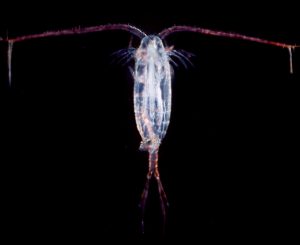
Building blocks of ocean food web in rapid decline as plankton productivity plunges
They’re teeny, tiny plants and organisms but their impact on ocean life is huge. Phytoplankton and zooplankton that live near the surface are the base of the ocean’s food system. Everything from small fish, big fish, whales and seabirds depend on their productivity. “They actually determine what’s going to happen, how much energy is going to be available for the rest of the food chain,” explained Pierre Pepin, a senior researcher with the Department of Fisheries and Oceans in St. John’s. Pepin says over the past 3-4 years, scientists have seen a persistent drop in phytoplankton and zooplankton in waters off Newfoundland and Labrador. >click to read<10:16
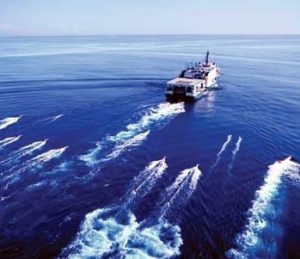
Dead plankton, stunned fish: the harms of man-made ocean noise
Human-caused ocean noise and its dangers to marine life are the focus of meetings at the United Nations this week, a victory for advocacy groups that have long warned of this problem. What are the causes of ocean noise? The main human activity that causes noise is maritime shipping. Among the loudest sounds are explosions aimed at demolishing offshore oil platforms, though these events are rare. Advocacy groups focus on seismic airguns, which are used by oil and gas interests to find reserves on the ocean floor. A boat tows 12-48 airguns at a time, each of which shoot loud blasts of compressed air. >click to read<15:27
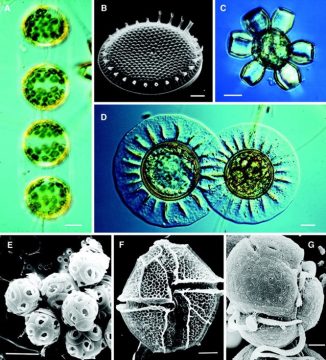
The phytoplankton decline, is there anything to it?
We have been told that the phytoplankton population is declining rapidly around the world and, of course, the cause is climate change. Phytoplankton is the base of the ocean food chain and it accounts for about half of global primary productivity or organic matter creation (Boyce, Lewis and Worm 2010). Phytoplankton is the major consumer of carbon dioxide, the dreaded demon trace gas, and the major producer of oxygen. So, first question, is the estimated decline in phytoplankton accurate, significant or unusual? Second question, if the decline is real, are the measurements long term enough to show it is not a natural occurrence? What is the natural variability and how do we know man-made climate change is to blame? Let’s investigate this. >click to read< 12:10
Ocean Pasture Plankton Collapse Cataclysmic Say German Media – Russ George responds
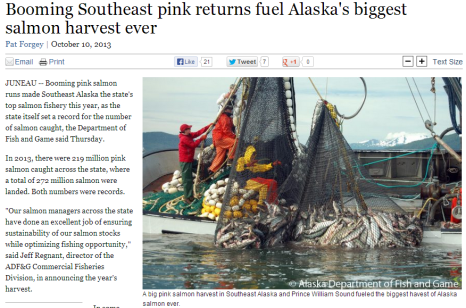 DW reports (April 2016): Food chains represent the greatest interdependency within the webs of life. The marine food chain, for instance, is essential for oceans – and depends on plankton. But environmental changes and human activities may be threatening plankton – and therefore all marine animals. (Editors note: Indeed the most favoured explanation for the collapse of plankton that make up vital ocean pastures is the impact of high and rising CO2 which at once starves the ocean of vital nutrients while acidifying ocean waters such that microscopic life, the larva of fish and shellfish as well as plankton cannot thrive. Proven Technology To The Rescue. Here’s what happens when a few tens of thousands of dollars of mineral rich dust is spread in infinitesimal amounts on a dying ocean pasture. The pasture blooms and grows an abundant crop of plankton that plankton feeds all of ocean life and in the case of my demonstration project grew hundreds of millions of additional salmon. IT JUST WORKS! Read the post here 19:35
DW reports (April 2016): Food chains represent the greatest interdependency within the webs of life. The marine food chain, for instance, is essential for oceans – and depends on plankton. But environmental changes and human activities may be threatening plankton – and therefore all marine animals. (Editors note: Indeed the most favoured explanation for the collapse of plankton that make up vital ocean pastures is the impact of high and rising CO2 which at once starves the ocean of vital nutrients while acidifying ocean waters such that microscopic life, the larva of fish and shellfish as well as plankton cannot thrive. Proven Technology To The Rescue. Here’s what happens when a few tens of thousands of dollars of mineral rich dust is spread in infinitesimal amounts on a dying ocean pasture. The pasture blooms and grows an abundant crop of plankton that plankton feeds all of ocean life and in the case of my demonstration project grew hundreds of millions of additional salmon. IT JUST WORKS! Read the post here 19:35
Bigelow Lab in the summer found a record-low growth rate for plankton, a crucial food source.
 In recent years, the researchers have measured a fivefold decline in the growth rate of phytoplankton, an indication of lower levels of the critical single-celled plants at the bottom of the marine food chain. Because phytoplankton are food for fish larvae, a lower abundance of phytoplankton could mean lower numbers of adult fish populations years from now, Balch said Based on measurements this year between June and September, however, the growth rate of phytoplankton is on pace to be at the lowest level since 2001. Read the rest here 08:24
In recent years, the researchers have measured a fivefold decline in the growth rate of phytoplankton, an indication of lower levels of the critical single-celled plants at the bottom of the marine food chain. Because phytoplankton are food for fish larvae, a lower abundance of phytoplankton could mean lower numbers of adult fish populations years from now, Balch said Based on measurements this year between June and September, however, the growth rate of phytoplankton is on pace to be at the lowest level since 2001. Read the rest here 08:24
A Fresh Look at Iron, Plankton, Carbon, Salmon and Ocean Engineering
 Two years ago this month, an edge-pushing environmental entrepreneur and a company formed by a Native Canadian village set off a wave of international protest by dispersing a pink slurry of 100 tons of iron-rich dust over one of the 60-mile-wide ocean eddies that routinely drift across the salmon feeding grounds of the Gulf of Alaska. Lots of links, Read more here 14:52
Two years ago this month, an edge-pushing environmental entrepreneur and a company formed by a Native Canadian village set off a wave of international protest by dispersing a pink slurry of 100 tons of iron-rich dust over one of the 60-mile-wide ocean eddies that routinely drift across the salmon feeding grounds of the Gulf of Alaska. Lots of links, Read more here 14:52
Nation’s ocean scientists meeting at Bigelow Lab on role of plankton
Fifty of the most prominent ocean scientists in the country will come to the Bigelow Laboratory for Ocean Sciences in Maine for a research event about the response of marine plankton to changing ocean conditions. Read more here 13:14
Citizen science study to map the oceans’ plankton
 “The reason the project came about was because, in 2010, some Canadian scientists wrote a paper that suggested that the phytoplankton in the world’s oceans had declined by 40% since the 1950’s,” explained project leader Richard Kirby, a research fellow at Plymouth University’s Marine Institute. Read more here bbc.com 15:46
“The reason the project came about was because, in 2010, some Canadian scientists wrote a paper that suggested that the phytoplankton in the world’s oceans had declined by 40% since the 1950’s,” explained project leader Richard Kirby, a research fellow at Plymouth University’s Marine Institute. Read more here bbc.com 15:46
The roiling drama of the planktonic world is a theatre of ambush predators, hermaphrodites and mucus-hurling cannibals
 From the article: The effects of warmer water have begun to show up away from the poles. At NOAA’s Narragansett Laboratory in Rhode Island, Feely’s colleague Kevin Friedland has watched wild swings in ocean temperatures wreak havoc on the bottom of the food chain. One of the most ecologically and,,Read [email protected] 11:51
From the article: The effects of warmer water have begun to show up away from the poles. At NOAA’s Narragansett Laboratory in Rhode Island, Feely’s colleague Kevin Friedland has watched wild swings in ocean temperatures wreak havoc on the bottom of the food chain. One of the most ecologically and,,Read [email protected] 11:51
Maine Shrimp: “We are screwed,” – Warming ocean, absence of springtime plankton surge, predation by other species, and of course the “obligatory” overfishing
 An advisory council had recommended that the fishery remain open on a limited basis in 2014, from mid-February through March. Past seasons have run from December through May. Spencer Fuller, the shrimp product line manager for Cozy Harbor Seafood in Portland, said that recommendation was rejected by the commission, which represents Maine, New Hampshire and Massachusetts. He said the compromise would have kept the industry going and prevented its reputation from being damaged in world markets. “We felt the risk of any damage to the fishery based on that proposal would have been minimal,” Fuller said. “We certainly don’t agree with (the commission’s) Draconian approach.” more@portlandpress 17:50
An advisory council had recommended that the fishery remain open on a limited basis in 2014, from mid-February through March. Past seasons have run from December through May. Spencer Fuller, the shrimp product line manager for Cozy Harbor Seafood in Portland, said that recommendation was rejected by the commission, which represents Maine, New Hampshire and Massachusetts. He said the compromise would have kept the industry going and prevented its reputation from being damaged in world markets. “We felt the risk of any damage to the fishery based on that proposal would have been minimal,” Fuller said. “We certainly don’t agree with (the commission’s) Draconian approach.” more@portlandpress 17:50
Zooplankton decline reported in North Atlantic
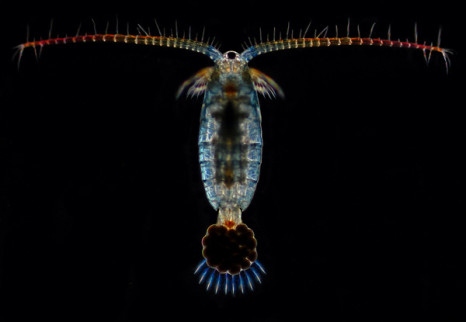 The absence of the normal surge of plankton in the spring is a concern because that’s when cod and haddock and many other species produce offspring, Friedland said. The spring surge also provides the foundation for normally abundant zooplankton levels that have made waters from the Middle Atlantic to New England productive for centuries. more@miamiherald Some articles we posted about this issue here 17:47
The absence of the normal surge of plankton in the spring is a concern because that’s when cod and haddock and many other species produce offspring, Friedland said. The spring surge also provides the foundation for normally abundant zooplankton levels that have made waters from the Middle Atlantic to New England productive for centuries. more@miamiherald Some articles we posted about this issue here 17:47
Weak link in the food chain – Most marine life relies on a regular and ongoing supply of phytoplankton.
 These microscopic marine plants lie at the base of the marine food chain and form the staple diet of minute ocean creatures called zooplankton. Without enough zooplankton in the seas, most marine life would not survive. Geo-engineering/ Reefs threat/ Future prospects [email protected] 13:09
These microscopic marine plants lie at the base of the marine food chain and form the staple diet of minute ocean creatures called zooplankton. Without enough zooplankton in the seas, most marine life would not survive. Geo-engineering/ Reefs threat/ Future prospects [email protected] 13:09
Not Your Average Drifters – Plankton, Part I – by Casey Diederich
 “Plankton” is a term that comes from the Greek meaning “wanderer” and was coined to describe any organism that doesn’t have the ability to swim against the water current. So, technically, even some very large animals like jellies are members of the plankton, but most planktonic organisms are very small, and as the title suggests, the best things come in small packages. more@neoo 16:26
“Plankton” is a term that comes from the Greek meaning “wanderer” and was coined to describe any organism that doesn’t have the ability to swim against the water current. So, technically, even some very large animals like jellies are members of the plankton, but most planktonic organisms are very small, and as the title suggests, the best things come in small packages. more@neoo 16:26
Your letters: Antibacterial soap can kill fish: Triclosan kills algae, phytoplankton and beneficial bacteria in lakes and rivers and it paralyzes fish.
 I at one time was a fisheries biologist for the U.S. Environmental Protection Agency and retired as a fisheries biologist for the Pennsylvania Fish and Boat Commission, Area 7 Southcentral Region. more from BOB ROSCINSKI 15:55
I at one time was a fisheries biologist for the U.S. Environmental Protection Agency and retired as a fisheries biologist for the Pennsylvania Fish and Boat Commission, Area 7 Southcentral Region. more from BOB ROSCINSKI 15:55
First global atlas of marine plankton reveals remarkable underwater world

Now researchers from the University of East Anglia have helped to compile the first ever global atlas of marine plankton – published today in a special issue of the journal Earth System Science Data. [email protected]
Image: Phytoplankton Bloom in the Norwegian Sea
The waters off Iceland rank among the world’s most productive fisheries. The reason for the abundance is an ample supply of phytoplankton, the base of the marine food chain.
(Get it Pete?) [email protected]
Ocean plankton’s absorption of CO2 higher than assumed
 In making their findings, the researchers have upended a decades-old core principle of marine science known as the Redfield ratio, named for famed oceanographer Alfred Redfield. He concluded in 1934 that from the top of the world’s oceans to their cool, dark depths, both plankton and the materials they excrete contain the same ratio (106:16:1) of carbon, nitrogen and phosphorous. continue
In making their findings, the researchers have upended a decades-old core principle of marine science known as the Redfield ratio, named for famed oceanographer Alfred Redfield. He concluded in 1934 that from the top of the world’s oceans to their cool, dark depths, both plankton and the materials they excrete contain the same ratio (106:16:1) of carbon, nitrogen and phosphorous. continue
Climate change could be affected by changing phytoplankton – Mridul Thomas MSU
In the current issue of Science Express, Michigan State University researchers show that by the end of the 21st century, warmer oceans will cause populations of these marine microorganisms to thrive near the poles and may shrink in equatorial waters. Since phytoplankton play a key role in the food chain and the world’s cycles of carbon, nitrogen, phosphorous and other elements, a drastic drop could have measurable consequences.http://fis.com/fis/worldnews/worldnews.asp?l=e&ndb=1&id=56428
Now We’re Talkin”! Iron sprinkling project by a “messing around, bumbling guy,” spawned the growth of enormous amounts of plankton. NOAA provided 20 instrument-laden buoys, Claims the agency had been “misled”.
I love this! The scientific community and the econuts are OUTRAGED! Outraged I tell ya! You tell me what you think. Leave a comment.
A California businessman chartered a fishing boat in July, loaded it with 100 tons of iron dust and cruised through Pacific waters off western Canada, spewing his cargo into the sea in an ecological experiment that has outraged scientists and government officials. The entrepreneur, whose foray came to light only this week, even duped the National Oceanic and Atmospheric Administration in the United States into lending him ocean-monitoring buoys for the project. The iron spawned the growth of enormous amounts of plankton, which Mr. George, a former fisheries and forestry worker, said might allow the project to meet one of its goals: aiding the recovery of the local salmon fishery for the native Haida.
Glass fibers – the rest of the story????? by Nils E. Stolpe/FishNet-USA
September 12, 2024
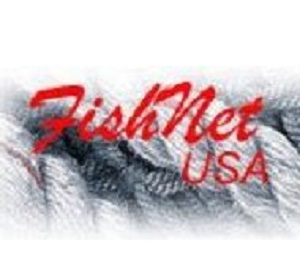 Floating around (sorry!) is the surprising story that the fiberglass that is being donated gratis to our oceans by the offshore wind industry is harmless because the fibers that make it up are chemically inert. Reassuring, isn’t it?
Floating around (sorry!) is the surprising story that the fiberglass that is being donated gratis to our oceans by the offshore wind industry is harmless because the fibers that make it up are chemically inert. Reassuring, isn’t it?
Well, in words made immortal by George and Irwin Gershwin in Porgy and Bess, “it ain’t necessarily so.”
To put those immortal words in the proper real world (not NOAA or BOEM scientist’s) perspective, the asbestos fibers that are still being used legally in a whole bunch of manufacturing processes today are chemically inert on their own. You can chomp on and swallow asbestos fibers to your heart’s content, as long as they stay in large chunks, with no ill effects. According to the National Library of Medicine “asbestos fibers are basically chemically inert, or nearly so. They do not evaporate, dissolve, burn, or undergo significant reactions with most chemicals.”
So what’s the problem with asbestos? Why is keeping us living, breathing, etc. critters as far as possible from any exposure to asbestos dust, asbestos powder, asbestos shavings, asbestos scrapings, asbestos dreams, etc. so important? Most simply, because finely divided asbestos dust, powder, etc., when it is ingested or inhaled (or added to a poultice or an ointment when the moon is full, for all I know) is definitely not good for any of us, contributing to quite a few rather unpleasant maladies/conditions that we’d all be better off without.
Obviously, knowing what we know now a material being “inert” is no guarantee that it is completely harmless to inhale or to ingest. Believing otherwise is to hearken back to the long-gone days of alchemy. Back then when a substance was considered bad, it was considered bad in any way, shape or form. While today asbestos, when in big enough chunks is probably ok (just don’t chew it for too long), in little, eensy, weensy amounts it’s a killer. Those microscopic bits and pieces of asbestos can raise hell with some living tissues that they come into contact with. And they often do.
That’s the problem with asbestos.
So what’s the potential problem with glass fibers embedded in a plastic matrix that we call fiberglass (or fiber reinforced plastic–FRP)? You know, the stuff that an almost 1,000 foot tall “windmill” just inadvertently “enriched” a whole bunch of our ocean waters surrounding Nantucket Island with.
I’ve written before about what effective grinding machines our oceans are. They are particularly so in areas of high oceanic energy. While the ocean depths are fairly calm and stable, with not a lot of turbulence or currents, the margins of the ocean basins are an entirely different proposition. Big rocks are turned into smaller rocks which are turned into sand which is turned into silt. All because of the friction of being rubbed together with other rocks, with shell fragments, by the natural processes that go on in the shallow waters that characterize the ocean margins.
So what happens when a huge fiberglass rotor on an offshore generator (300+ feet long and still enlarging as wind generators become larger-and more efficient) delaminates and takes a dive into one of our oceans? In fairly short (geologically speaking) order it’s broken into thousands of smaller glass fibers embedded in a possibly “defective” plastic matrix held together with possibly “defective” adhesives. It gets ground up. And it’s very likely that a significant amount of it gets ground up into silicon “shards”-some of which become incorporated into the plankton.
That’s very possibly one of the initial steps in turning giant wind turbine blades into what will eventually become microscopic glass microfilaments.
Many of the filter-feeders out there, either living in or attached to the bottom, or floating around as part of the plankton, have been gifted by evolution with the ability to (sometimes) pick and choose amongst planktonic food and a bunch of non-food that has been cluttering up the oceans for eons. The food gets eaten. The non-digestibles either get dumped or get incorporated into the oceanic food chain.
We don’t have much of a clue about the effects on living creatures- including Homo sapiens-of these silicon shards once the ocean currents have been grinding them up with an endless procession of waves. (According to Wikipedia, “silicosis is a form of occupational lung disease caused by inhalation of crystalline silica dust. It is marked by inflammation and scarring in the form of nodular lesions in the upper lobes of the lungs. It is a type of pneumoconiosis. Silicosis, particularly the acute form, is characterized by shortness of breath, cough, fever, and cyanosis.” There is no known cure.)
Likewise, we don’t have a clue about whether those oceanic filter feeders are evolved enough (pls forgive me, C. Darwin!) to be able to discriminate between harmless and “dangerous” microfibers, whether glass or asbestos, without incorporating them into their own tissues (and subsequently into ours). And it appears as if Scandinavia’s most gifted engineers and most canny investors aren’t concerned in the slightest. (We also shouldn’t forget our own home court “heroes” in NOAA and BOEM.)
Suppose that those filter feeding mollusks (clams and oysters) that various organizations are so assiduously trying to reestablish in New York harbor or various other estuaries that were once home to extensive shellfish beds, are finally re-established? Being filter feeders, they are going to pump in bad (contaminated) water, extract sustenance from it as they tirelessly pump it in and out, and then dump the indigestibles pseudo feces (as they’re called in the technical literature) “over the side.” Do you think there’s a chance that among those indigestible pseudofeces there might be some silicon shards? Do you think anyone knows? Do you think anyone cares? President Biden and Governor Murphy and a few other kindred souls-as well as a bunch of Scandinavian technical types and investors-don’t seem to be all that interested, but maybe they should be.
How long would it take a bunch of glass microfilaments that started out as part of a 300+ foot long propeller spinning around in a wind driven generator off Nantucket to end up as “crystalline silica dust?” How much of that dust might render those clams or oysters that have incorporated it into their tissues toxic–either to fish lovers or to other edible critters swimming or crawling around out there-that we might have occasion to eat? And how many independent researchers are concerned?
Perhaps our near-shore worries should be directed towards just a bit more than stumbling by luck over some errant bits of flotsam and jetsam which have been released into our coastal waters or washed up on our beaches.
2024 Northeast Spring Bottom Trawl Survey Summary
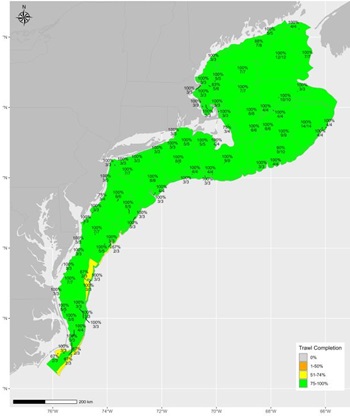 The 2024 Spring Bottom Trawl Survey began on March 6 and completed operations on May 13 aboard the NOAA Ship Henry B. Bigelow. The survey operates on the Northwest Atlantic continental shelf, sampling at stations from Cape Lookout, North Carolina to Canada’s Scotian Shelf. We planned 377 trawl survey stations and completed 367, for a high completion rate of 97 percent. We sampled plankton at a subset of stations. We took 111 bongo samples of 116 planned, or 96 percent. Data collected include fish age, length, weight, sex, maturity and food habits. All are critical data used in regional fish stock assessments. These assessments help inform fishery management decisions by the New England and Mid-Atlantic Fishery Management Councils, as well as the Atlantic States Marine Fisheries Commission. Charts, photo gallery, more, >>CLICK TO READ<< 13:20
The 2024 Spring Bottom Trawl Survey began on March 6 and completed operations on May 13 aboard the NOAA Ship Henry B. Bigelow. The survey operates on the Northwest Atlantic continental shelf, sampling at stations from Cape Lookout, North Carolina to Canada’s Scotian Shelf. We planned 377 trawl survey stations and completed 367, for a high completion rate of 97 percent. We sampled plankton at a subset of stations. We took 111 bongo samples of 116 planned, or 96 percent. Data collected include fish age, length, weight, sex, maturity and food habits. All are critical data used in regional fish stock assessments. These assessments help inform fishery management decisions by the New England and Mid-Atlantic Fishery Management Councils, as well as the Atlantic States Marine Fisheries Commission. Charts, photo gallery, more, >>CLICK TO READ<< 13:20
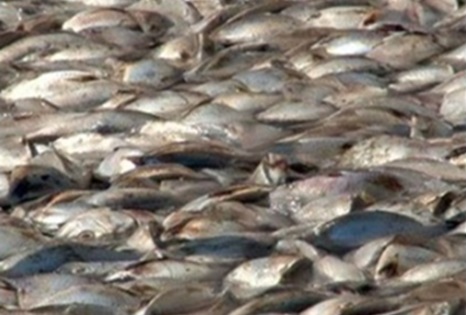
New Rutgers Study Confirms Hypoxic Event Last Summer off the New Jersey Coast by Jim Lovgren
In a scientific report released in December 2023 by Associate Professor Grace Saba, and Professor Josh Kohut using underwater robots, called “Gliders” to track ocean water quality, specifically, oxygen concentrations and PH levels, the researchers discovered that large areas of the New York Bight suffered a hypoxic event last summer. The study suggests that any of a number of factors could have caused these conditions, including a change in normal ocean stratification, increased input of nutrients which increase phytoplankton production, increased sea temperatures, and a few more. Conveniently missing from the possible causes of this hypoxic event is the impact of the offshore wind research vessels that have been extensively using high powered sonar and seismic devises throughout the New York bight area for over a year now. Also ignored was any outreach to the scallop fishermen along the coast who have been reporting unusual amounts of “clappers”, which are dead scallops, in their tows. In an article posted in the spring of 2023 in Fisherynation.com, “Is the Great Fishkill of 1976 About to be Repeated?“, I suggested that the New York bight could see an environmental catastrophe that could rival or surpass the great fish kill of 1976 and would be caused by the decomposing bodies of the dead sea creatures killed by the seismic and Sonar assault on the ocean bottom by offshore wind research vessels. Links, more, >>click to read<< 19:46
NEW RUTGERS STUDY CONFIRMS HYPOXIC EVENT LAST SUMMER OFF THE NEW JERSEY COAST BY JIM LOVGREN
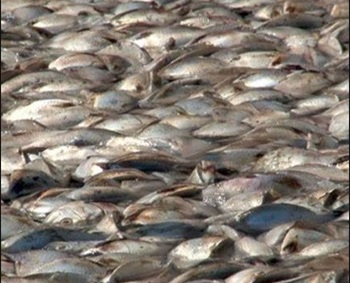 In a scientific report released in December 2023 by Associate Professor Grace Saba, and Professor Josh Kohut using underwater robots, called “Gliders” to track ocean water quality, specifically, oxygen concentrations and PH levels, the researchers discovered that large areas of the New York Bight suffered a hypoxic event last summer. The research used three different Gliders, with one of them tracking inshore waters from Long Branch to Cape May, out to about fifteen miles offshore, while the other two gliders worked together, and tracked down the southern edge of the mud hole out to about 30 fathoms where they then followed that depth in a southerly direction working 20 to 40 miles offshore.
In a scientific report released in December 2023 by Associate Professor Grace Saba, and Professor Josh Kohut using underwater robots, called “Gliders” to track ocean water quality, specifically, oxygen concentrations and PH levels, the researchers discovered that large areas of the New York Bight suffered a hypoxic event last summer. The research used three different Gliders, with one of them tracking inshore waters from Long Branch to Cape May, out to about fifteen miles offshore, while the other two gliders worked together, and tracked down the southern edge of the mud hole out to about 30 fathoms where they then followed that depth in a southerly direction working 20 to 40 miles offshore.
From their study; “Coast wide, hypoxic levels of dissolved oxygen [concentrations less then 3 mg/liter] were observed at shallower, more inshore locations. In addition to low ph measured in bottom waters, which is indicative of acidification, aragonite saturation state [a relevant metric for biological impacts of ocean acidification] was calculated to be less than one in several locations. Normal, more optimal levels in seawater typically include dissolved oxygen concentrations greater then 7 mg/liter,ph of 8.1 and aragonite saturation states greater than 3.” Glider #28 which tracked the inshore course, found hypoxic levels along its whole route, while gliders 39 and 40 found low aragonite levels at multiple locations along their offshore course. The researchers also were informed by fishermen of dead sea creatures being caught in their lobster pots along the mud hole, and also reports of more dead sea life off the near shore waters of southern Monmouth County, both areas of extensive offshore wind sonar and seismic testing.
From their study, “Mortalities were reported of American lobster, Jonah crab, Atlantic rock crab, spider crabs, Black Sea Bass, and tautog were reported not only in pots where trapped organisms would not have been able to escape poor conditions, but also on the open bottom. This observation suggests that if low dissolved oxygen and /or ph were indeed the culprit for these reported mortalities, the area may have been extensive enough that they could not escape in time.” The study suggests that any of a number of factors could have caused these conditions, including a change in normal ocean stratification, increased input of nutrients which increase phytoplankton production, increased sea temperatures, and a few more. Conveniently missing from the possible causes of this hypoxic event is the impact of the
offshore wind research vessels that have been extensively using high powered sonar and seismic devises throughout the New York bight area for over a year now. Also ignored was any outreach to the scallop fishermen along the coast who have been reporting unusual amounts of “clappers”, which are dead scallops, in their tows.
In an article posted in the spring of 2023 in Fisherynation.com, “Is the Great Fishkill of 1976 About to be Repeated?“, I suggested that the New York bight could see an environmental catastrophe that could rival or surpass the great fish kill of 1976 and would be caused by the decomposing bodies of the dead sea creatures killed by the seismic and Sonar assault on the ocean bottom by offshore wind research vessels. Throughout this past year, numerous accounts of dead sea creatures washing up on the beaches of Nantucket, and New Jersey have been reported, all of them while offshore wind vessels were surveying nearby. The dead marine mammals are well known casualties to the public, but authorities deny any connections between offshore wind and the strandings, while they refuse, even when perfect opportunities present themselves, to perform inner ear autopsies on these creatures that might discover the true cause of death. Likewise for years NOAA and BOEM have refused to perform any studies concerning the effects of loud sonar and seismic on marine mammals, leaving that to the US Navy, which was forced to by lawsuits. As a former member of the Mid Atlantic Fishery Management Council, I heard a term used by many fishermen in regard to NOAA/NMFS science, “Garbage in, garbage out.” This means if all information is not properly presented or not even included in a study, the result is useless garbage, usually to conform to a desired result. This Rutgers study, at this point, is very near to being in that category, because one of the most probable causes of this hypoxic event has been ignored and not even considered.
The great fish kill of 1976 may not ever been known about without the efforts of the commercial fishermen who observed the dying clams and other benthic organisms coming up in their dredges while working their historic fishing grounds and brought it to the attention of the authorities. That kill was caused by the continued use of the ocean as a cesspool for human excrement and environmental conditions that caused a large algae bloom and ultimately a large area of hypoxic ocean. Today, thanks to government [mis] management there are very few commercial fishermen left to report such conditions. The observations of scallop fishermen and the alarming amount of dead scallops they see in formerly healthy fishing grounds, that had recently been pounded by offshore wind vessels, has been ignored. Rutgers out reach to them has been nonexistent, yet a simple telephone call to any of the docks in New Jersey could have resulted in many more reports of dead sea creatures throughout the bight area. So this study is garbage by omission, with what appears to be an effort to blame the hypoxic event on global warming. Myself, I think that the conditions I cited in the Fisherynation article, water temperature in the 80’s, and a lack of storms to mix the water column during the tranquil summer months were not met. There could be many causes for last summer’s hypoxic event, but what is probably the real cause has not even been considered.
All is not lost though, this is an ongoing study, that hopefully will be performed each year, because the data that is gathered is very important in understanding what is happening in our ocean waters. Professor Saba is seeking information from anyone who has observed unusual sea creature mortalities over the past summer and can be contacted at [email protected]. I urge all fishermen, and citizens to report what they have observed this past year to her. Perhaps one of her students will take it upon themselves to research those studies from Australia that I cite in the fish kill article from last spring. Without such information this study becomes just another in a long line of advocacy science that has been produced in the last two decades.
The Rutgers report can be found on the Rutgers website https//www.rutgers.edu in the Department of marine and coastal sciences department.
Maine DMR Receives $17 Million to Support Maine’s Lobster Industry, Improve Flawed Right Whale Data
 Augusta – Governor Janet Mills and Department of Marine Resources (DMR) Commissioner Patrick Keliher today announced that Maine has received $17,252,551 from the National Oceanic and Atmospheric Administration (NOAA) to help improve data on endangered North Atlantic right whales (NARW).
Augusta – Governor Janet Mills and Department of Marine Resources (DMR) Commissioner Patrick Keliher today announced that Maine has received $17,252,551 from the National Oceanic and Atmospheric Administration (NOAA) to help improve data on endangered North Atlantic right whales (NARW).
The money was the result of The Consolidated Appropriations Act passed by Congress in December of 2022 which established a $26 million fund for states with lobster fisheries. This fund is administered by the Atlantic States Marine Fisheries Commission which divided the money among states based on active lobster harvesters.
“Maine’s lobster industry has a long and proud tradition of responsible harvesting practices and good environmental stewardship, including significant investments by lobstermen in to protect right whales,” said Governor Mills. “These funds will ensure that federal regulators can no longer burden this vital industry with management decisions based on poor data that threaten the livelihoods of thousands of Mainers. I thank Maine’s Congressional Delegation for its work to secure this important funding.”
“The goal of this research is to collect data that tells us what is happening in the Gulf of Maine, so we can be protective of whales in a way that also doesn’t devastate Maine’s critically important lobster industry,” said DMR Commissioner Patrick Keliher.
The lack of data on NARW presence and fishing effort in the Gulf of Maine (GOM) has resulted in high uncertainty in existing models that the federal government uses to determine the risk of serious injury and mortality to right whales by lobster gear. This funding will allow DMR to expand NARW research and improve the assessment of risk to NARWs posed by fixed gear fisheries in advance of future federal rulemakings.
“That uncertainty has caused federal regulators to make assumptions that have resulted in sweeping regulations which have caused significant economic hardship for Maine’s critically important lobster industry,” said DMR Commissioner Patrick Keliher.
DMR will use the funds to improve data on NARW presence by conducting passive acoustic monitoring (PAM) at 26 sites throughout the Gulf of Maine (GOM). These sites will be in addition to eight PAM moorings deployed since 2020 in collaboration with Northeast Fisheries Science Center and the University of Maine.
In addition, DMR will conduct surveys of NARWs in the GOM by boat and airplane, as well as surveys of the primary food source for NARWs, a species of zooplankton known as Calanus finmarchicus.
Federal regulators use a model, known as the Decision Support Tool (DST), which incorporates data on whale density and lobster fishing gear location and configuration to assign the risk of serious injury and mortality to NARWs. The model allows federal regulators to assess how that risk changes under different management scenarios.
Maine’s recently enacted reporting and tracker requirements for state and federally permitted lobster harvesters is a critical component of this work, and it will greatly improve available data on fishing effort in the Gulf of Maine.
“Having better data on whale distribution in addition to gear location and configuration will vastly improve the ability of the federal government to focus their efforts on the areas of greatest risk” said Commissioner Keliher. “DMR’s approach is to not use assumptions, but rather the best available data so NOAA understands that the Maine lobster fishery is not the threat they make it out to be. This will allow them to develop more targeted management measures, which will reduce the burden on this industry.”
DMR anticipates that these funds will continue be available into the future. DMR plans to use future funds to build on its research program and to develop a new approach to risk modeling that incorporates data on changes in lobster and NARW populations and habitat use. DMR will also investigate the use of dynamic management, an approach in which temporary closures are only established in specific areas if whales are detected.
“This federal funding is critical to improving the flawed and incomplete data that is being used to create unnecessary, burdensome requirements for Maine lobstermen and women,” said Senator Collins. “As the Vice Chairman of the Appropriations Committee, I am committed to continuing to advocate for this funding that supports the imperative work the Maine Department of Marine Resources is doing to support the future of Maine’s iconic lobster industry.”
“The funding for this important work is due to the extraordinary efforts of Maine’s Congressional delegation and Governor Mills, who coordinated closely last year to ensure the necessary time and funding to conduct this critically important research,” said Commissioner Keliher.
This funding is the result of the Fiscal Year 2023 government funding package passed by Congress in December 2022, which included a regulatory pause for Maine’s lobster industry and is in effect until December 31, 2028. This government funding package also established a $26 million fund for states with lobster fisheries administered by the Atlantic States Marine Fisheries Commission. Senator Collins, Vice Chair of the Appropriations Committee, played a key role in advancing this funding and regulatory pause.
Additional supportive statements can be found here.
More information on DMR’s North Atlantic right whale and alternative gear research can be found at https://www.maine.gov/dmr/
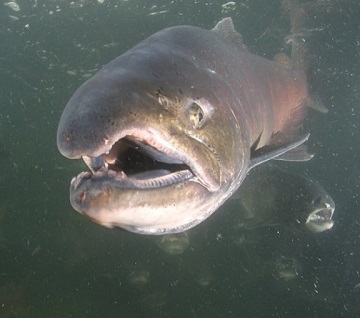
What salmon eat in the open ocean
After one to two years of munching on zooplankton in freshwater, young sockeye – or smolt – head for salt water to begin the next chapter of their anadromous lives, where there’s a whole different menu available. Dr. Katie Howard studies salmon diets in the open ocean and is an ocean fisheries scientist with the Alaska Department of Fish and Game. “The sockeye, pink and chum, eat a pretty diverse array of invertebrates and fish,” she said. “And the amount that their diets overlap or don’t overlap, is really dependent on where they are.” Howard calls these three species of salmon generalists; for the most part, they’ll eat whatever is available to them. But she says chinook, or king salmon, choose different marine meals. “Chinook tend to focus more on fish and squid. But, which fish and which squid really depends on where they are and what’s available,” she said. >click to read< 11:08






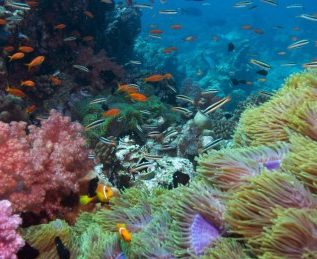
 Coccolithophores–tiny calcifying plants that are part of the foundation of the marine food web–have been increasing in relative abundance in the North Atlantic over the last 45 years, as carbon input into ocean waters has increased. Their relative abundance has increased 10 times, or by an order of magnitude, during this sampling period. This finding was diametrically opposed to what scientists had expected since coccolithophores make their plates out of calcium carbonate, which is becoming more difficult as the ocean becomes more acidic and pH is reduced. These findings were reported in the November 26th edition of Science,,,
Coccolithophores–tiny calcifying plants that are part of the foundation of the marine food web–have been increasing in relative abundance in the North Atlantic over the last 45 years, as carbon input into ocean waters has increased. Their relative abundance has increased 10 times, or by an order of magnitude, during this sampling period. This finding was diametrically opposed to what scientists had expected since coccolithophores make their plates out of calcium carbonate, which is becoming more difficult as the ocean becomes more acidic and pH is reduced. These findings were reported in the November 26th edition of Science,,, 


























